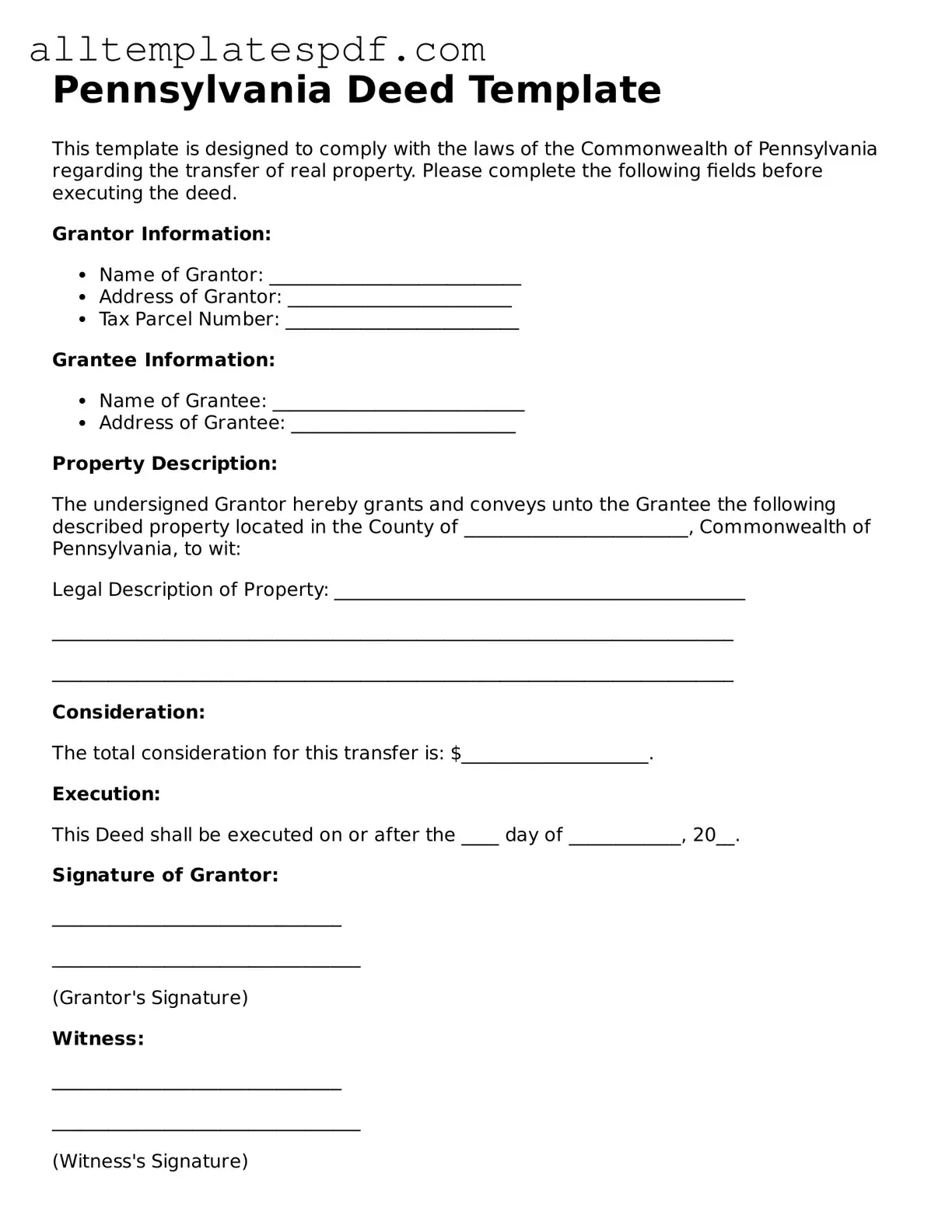When filling out the Pennsylvania Deed form, many people make common mistakes that can lead to issues down the line. One frequent error is failing to include the correct names of the grantor and grantee. It's essential that these names match the legal documents exactly. Any discrepancies can cause problems during the transfer of property.
Another mistake is not providing a complete legal description of the property. This description should include the lot number, block number, and any other identifying information. Omitting details can create confusion and may result in legal disputes later.
Some individuals overlook the importance of notarization. A deed must be signed in front of a notary public to be valid. Without this step, the deed may not be recognized by the court or other entities involved in property transactions.
People often forget to check the county requirements. Each county in Pennsylvania may have specific rules about how deeds should be filed. Failing to adhere to these guidelines can delay the process or lead to rejection of the deed.
Incorrectly calculating transfer taxes is another common issue. Buyers and sellers must understand the tax implications of their transaction. Miscalculating these taxes can result in fines or additional fees.
Some individuals neglect to include any necessary covenants or restrictions. If there are specific conditions tied to the property, they must be clearly stated in the deed. Omitting these can lead to misunderstandings about what can and cannot be done with the property.
Another mistake is not providing the date of the transaction. This date is crucial for establishing the timeline of ownership. Without it, there could be confusion regarding when the property officially changed hands.
People sometimes use outdated forms. Laws and regulations can change, so it's important to ensure that the most current version of the deed form is being used. Using an outdated form may lead to complications or invalidation of the deed.
Failing to double-check for typos or errors is also a common mistake. Simple mistakes in names, addresses, or numbers can lead to significant problems. Taking the time to review the document can save a lot of hassle later.
Lastly, some individuals do not keep copies of the signed deed. It is important to retain a copy for personal records. This can be helpful for future reference or if any questions arise regarding the property.
